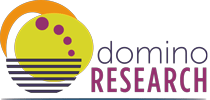Keeping traffic flowing at your events is easier when you use mobile lockscreen notifications.
If you’re not familiar with mobile lockscreen notifications, then the latest podcast episode is definitely for you!
Just like an SMS (text) message, the mobile wallet uses the phone’s lockscreen to send messages to recipients who have opted to receive them (ie, your volunteers, employees, attendees, vendors and sponsors at your event).
[LISTEN: Using lockscreen notifications to manage traffic flow at your events – PODCAST EPISODE]
If you’re already running an old school SMS campaign (it’s ok, we know that some of you still do that), then you can potentially rely on that system, although not without some quirks. If you aren’t fortunate (or spending enough) to be using shortcodes with your messaging, then you’re probably in the random number rotation method that means your recipients are getting a message from a different number every time.
Set up your event correctly from the start.
The best time to get everyone onboard with using mobile lockscreen notifications is when they receive their initial confirmations after getting tickets or being engaged to speak at your event. It’s simple and easy to setup and implement, and people appreciate the effort and attention you are giving them.
[DOWNLOAD: iBeacon Planner Worksheet for Your Events – FREE WORKSHEET]
If you’re looking for ways to capitalize on event traffic, as well as making sure that everyone involved knows where they are supposed to be and when they are supposed to be there, then you’re going to want to hop over to the podcast episode and start listening right now.
There are always going to be small – or sometimes big – issues at an event. Someone’s flight is late and they can’t make their speaker slot, or the fire alarm goes off and you have to clear the hall and reschedule any number of speakers into other time slots or other rooms, these are the kind of notifications that keep the drama to a minimum.
If you’re hosting an upcoming event, or just thinking about it, don’t wait until you’re well into the planning stages to decide how to handle attendee and speaker traffic flow when you do have issues. It’s also a great way to send out not so subtle reminders at various points during the day about upcoming events.
